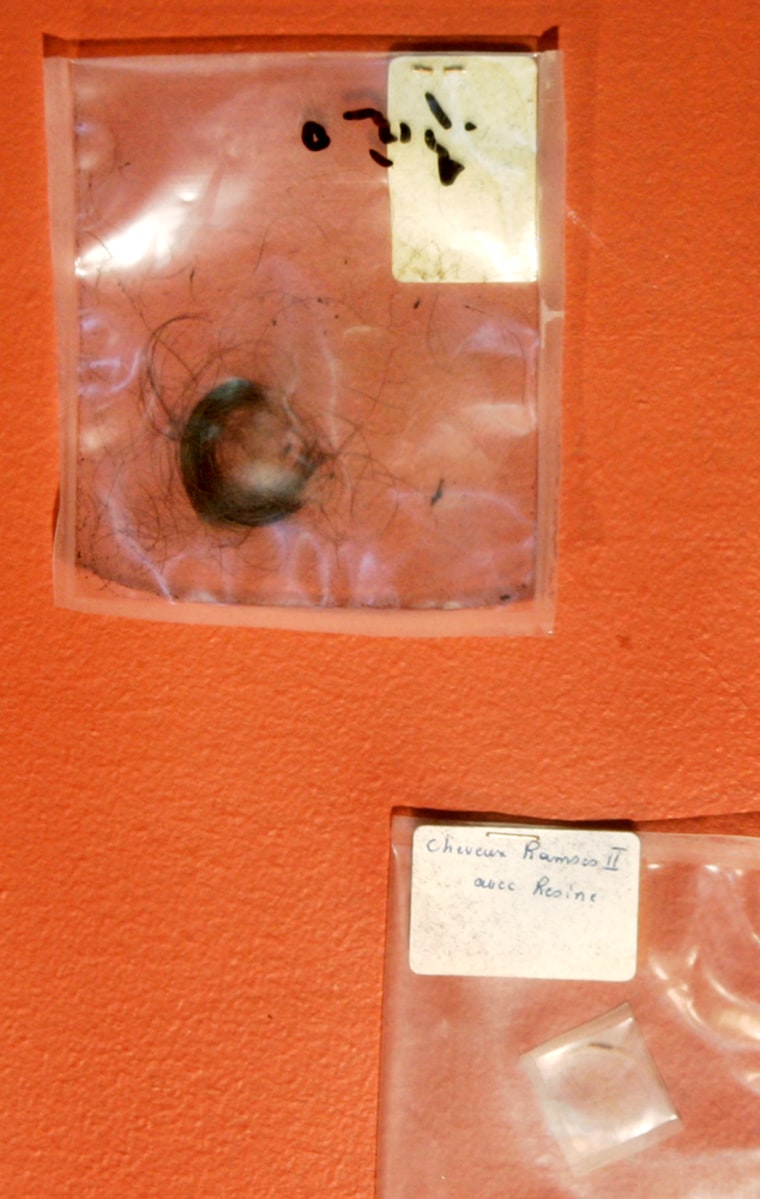Egyptian officials unveiled locks of 3,200-year-old hair Tuesday from the pharaoh Ramses II, returned to this country after being stolen 30 years ago in France and put up for sale on the Internet.
The small tufts of brown hair were displayed in a glass case at the Egyptian Museum alongside linen bandages and 13 pieces of resin used in the mummification of Ramses and his son Merneptah. The hair will eventually be put on exhibit next to Ramses’ mummy at the museum.
The theft was discovered when the pieces of hair and cloth from the mummy were put up for sale on a Web site last November by a French postal worker, Jean-Michel Diebolt, who gave the hair a price tag of $2,600.
“I was so upset, how the hair of the mummy — of the greatest king of Egypt — can be sold on the Internet,” said Egypt’s antiquities chief, Zahi Hawass.
Diebolt, 50, apparently obtained the items from his late father, a French researcher who examined the mummy when it was brought to France in 1976 for treatment to stop the spread of a rare fungus. Diebolt is being investigated in France for allegedly possessing stolen goods.
Egyptian antiquities official Ahmed Salah traveled to Paris last week to retrieve the stolen items.
“It was wonderful mission. I felt very great when I had the lock of hair of Ramses II in my hand,” Salah said.

Ramses II, who ruled from 1270 to 1213 B.C., is one of ancient Egypt’s most famous pharaohs, known for building some of its grandest monuments. Some believe he was the pharaoh at the time of Moses.
Hawass, who has pressed several countries for the return of Egyptian antiquities, said the Internet is playing an important role in the search for other stolen relics, though he did not provide other examples.
“We open the Internet every day, and the most important source you have are my spies,” Hawass said. “I have spies all over the world, and those spies, they inform me every day of things you would not believe.”
Hawass has sought — without success — the return of such finds as the Rosetta Stone at the British Museum, the bust of Nefertiti at Berlin’s Egyptian Museum and a pharaonic mask at the St. Louis Art Museum.
He said he planned to take legal action to get the Ka Nefer Nefer funerary mask back from St. Louis. Saint Louis Art Museum director Brent Benjamin has said the museum intends to keep the mask as it has received nothing to support the claim that the mask was stolen before it was obtained in 1998.
But Hawass said Egypt is awaiting the arrival of a statue coming from Spain, another artifact from Mexico and duck-shaped lamps from Paris that were stolen from Saqqara, site of Egypt’s most ancient pyramid and burial site of kings.
“When one country gives you back your artifact, other countries will do the same,” Salah said.
